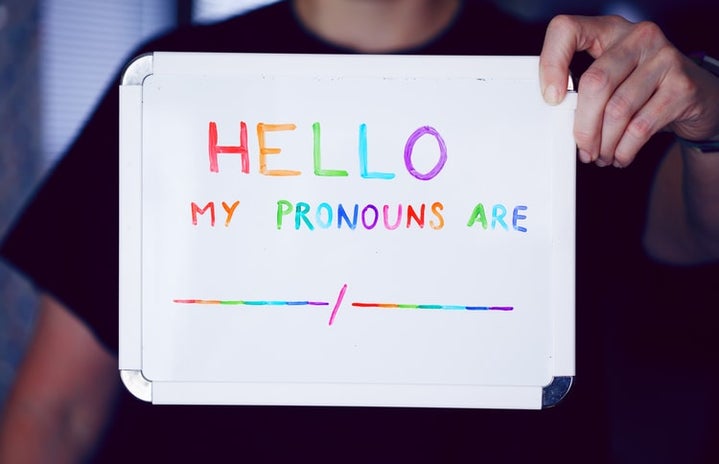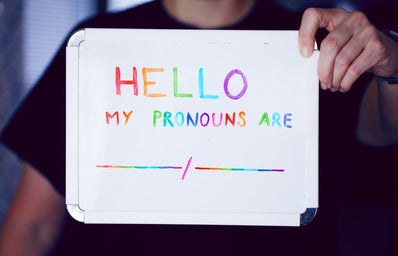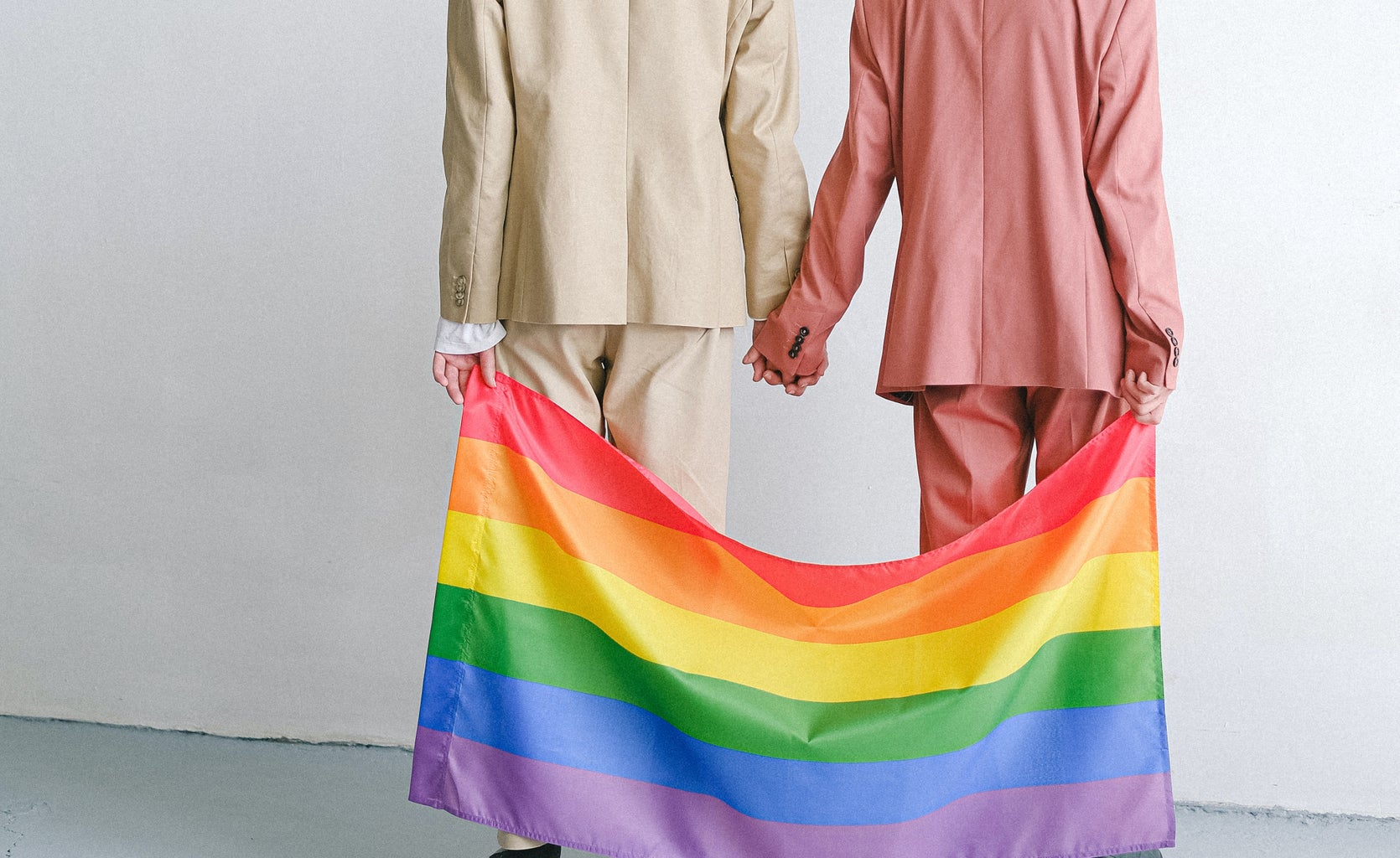So… I’m Gender Fluid
“Do you prefer him or her? Either one’s cool-I’m genderfluid.” – Mvxx. Amillivn, Sappho Intl
For a significant portion of my life, I felt different, but without fully understanding why. I felt a disconnect from the rigid male-female gender binary that Western society shoves down our throats. Learning gender-expansive terminology, such as gender fluidity and gender nonconforming (GNC) helped me piece together my own identity.
What is Gender Fluidity?
For my lovely readers who are a bit uncertain of LGBTQIA+ terminology, here is a useful key of definitions:
- Cisgender means a person’s gender identity matches the sex — female or male — designated on their original birth certificate. (L. Katz-Wise, 2020)
- Gender fluidity refers to change over time in a person’s gender expression or gender identity, or both. That change might be in expression, but not identity, or in identity, but not expression. Or both expression and identity might change together. (L. Katz-Wise, 2020)
- Gender variance or gender nonconformity is behaviour or gender expression by an individual that does not match masculine or feminine gender norms. A gender-nonconforming person may be variant in their gender identity, being transgender or non-binary, or they may be cisgender. (Miller and Grollman, 2015)
- Gender euphoria can be understood as the profound emotion of alignment between one’s gender identity and expression.
“Some people describe themselves as “gender-fluid.” As an identity, it typically fits under the transgender and nonbinary umbrella, which applies to people whose gender identity doesn’t match the sex assigned to them on their original birth certificate. (Nonbinary means a person’s gender identity doesn’t fit into strict cultural categories of female or male.)” (L. Katz-Wise, 2020)
Growing up in the early/mid 2000s, resources and vocabulary surrounding gender fluidity were limited. LGBTQIA+ representation in media was scarce, and terms like “gender fluid” and “pansexual” were not widely known. However, through shows like Supernatural, where the angels were portrayed as ambiguously gender-fluid and pansexual beings, I was introduced to these concepts.
These characters, who could inhabit both female and male vessels, fascinated me. They seamlessly blended masculine and feminine energies, challenging my preconceived notions of gender. I often imagined myself shapeshifting between genders to mirror the internal fluidity I sensed within myself. These fictional representations of gender fluidity illuminated the reality and validity of my own experiences, providing me with hope and a newfound understanding of who I was and wanted to be. They affirmed that being fluid and breaking away from a single gender label was not just acceptable but also a valid and beautiful way to exist.
This newfound understanding inspired me to embrace my genuine self-expression. I embraced androgynous dressing and defied gender norms that felt restrictive. I eschewed the need for a singular label or pronoun, preferring to embody the fluidity of language. I found comfort in terms like “she/he/they” to encapsulate my multifaceted identity. Despite being open to all gendered pronouns, people often refer to me by “she/her” – this doesn’t bother me, of course; it is sometimes easier, and more habitual, to just accept pronouns on the basis of my sex after all.
Embracing gender fluidity has been a transformative journey, empowering me to reconnect with the multifaceted essence of my being. It has liberated me from the confines of societal norms, allowing me to wholeheartedly embrace my authentic self. While my outward appearance primarily leans towards the feminine, I find immense joy in receiving compliments that affirm my perceived masculine traits. My favourite remarks have been “you are so chivalrous” and “you are such a gentleman.” These expressions have truly made my day and ignited a sense of gender euphoria within me.
Judith Butler’s seminal work, “Gender Trouble: Feminism and the Subversion of Identity,” provided me with a deeper understanding of gender fluidity and its impact on society. Butler’s concept of gender performativity challenged my assumptions about gender as an inherent trait, asserting that it is rather a socially constructed behaviour that is performed through actions and speech. This resonated deeply with my own experiences as I navigated the fluidity of my gender identity.
The Significance of Gender Fluidity
Gender fluidity disrupts the traditional binary view of gender, challenging us to reconsider our understanding of gender identity and expression. It has significant implications for our society:
- Challenging Traditions: Gender fluidity challenges the centuries-old notion of a rigid gender binary, prompting us to move towards a more inclusive and nuanced understanding of gender.
- Expanding Notions of Identity: Gender fluidity demonstrates that gender is not fixed but fluid and changeable, offering liberation and inclusivity for those who feel confined by traditional gender categories.
- Highlighting Social Construction: It brings attention to the fact that gender is a socially constructed concept, revealing its oppressive nature and the impact of societal norms and expectations.
- Diverse Expression: By challenging the notion of a single “right” way to express gender, it fosters more inclusive and diverse gender expressions – gender is a spectrum, after all!
Conclusion
Gender fluidity and performativity challenge traditional gender understandings, urging us to recognize the complexity of gender identity. As we progress in our understanding of gender, it is crucial to remain open to diverse expressions and identities. Embracing an androgynous presentation, embracing my ambivalence towards pronouns, and liberating myself from the constraints of traditional gender norms have all been transformative aspects of my journey towards authenticity.
If you are interested in reading more on gender fluidity, and GNC experiences, I would recommend Laura Kate Dale’s book “Gender Euphoria: Stories of Joy from Trans, Non-binary and Intersex Writers”. This book has been particularly inspiring for me, offering a collection of diverse perspectives on gender euphoria and its significance in the lives of gender-expansive individuals.
References:
- “Sexualized Saturdays: The Angels of Supernatural” | Lady Geek Girl and Friends
- “Gender Trouble: Feminism and the Subversion of Identity” by Judith Butler (1990)



